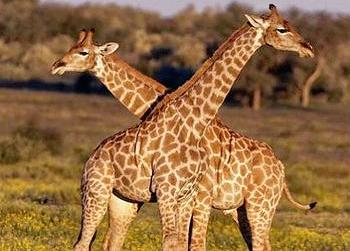
GENEVA, Switzerland, August 23, 2019 (ENS) – Giraffes will now be protected against trade in their body parts for the first time. Delegates from 183 countries to the tri-annual Convention on International Trade in Endangered Species decided to add giraffes to an endangered species list, voting to regulate the trade in products made from giraffes such as skins, bones and meat.
The goal is to protect endangered species such as giraffes at risk of over-exploitation as a result of international trade.

The United Kingdom’s International Environment Minister Zac Goldsmith said, “I am absolutely delighted by the decision to increase protection for giraffes. This is a very important step towards reducing the threat faced by these noble and iconic animals. I pay tribute to our own negotiators who made the case so firmly.”
Giraffe numbers have declined by almost 30 percent in just over three decades to approximately 111,000 in the wild. It is likely that giraffe numbered 10 times as many only a century ago, according to the nonprofit Giraffe Conservation Foundation.
The Foundation aims to secure and increase current giraffe numbers and their distribution throughout their range in Africa. The group says this goal is achievable, “especially in cooperation with other key conservation efforts where giraffes occupy the same landscapes as other focus species.”
On 21 and 22 August, the International Consortium on Combating Wildlife Crime, ICCWC, convened the Third Global Meeting of Wildlife Enforcement Networks (WENs). The meeting brought together networks from around the world, and wildlife law enforcement officers as well as other relevant stakeholders to share experiences on strengthening efforts at the regional, sub-regional and global level to combat wildlife crime.
Guidelines for Wildlife Enforcement Networks aimed at further strengthening the role of Wildlife Enforcement Networks in the fight against wildlife crime are currently under development.
These guidelines will provide a self-assessment tool that can be drawn upon both when establishing a new Wildlife Enforcement Network, or to strengthen an already existing WEN. Targeted discussions will be held at the WEN meeting to further refine these guidelines.
Ivonne Higuero, Secretary-General of CITES said that until the close of the conference on August 28, CITES Parties will discuss a wide variety of matters and make critical decisions to protect wildlife.
“While much of the conversation will focus on ensuring trade is legal and sustainable, CoP18 will provide a crucial space for policymakers and law enforcement practitioners to come together, exchange best practices, and agree on measures to strengthen responses to wildlife crime,” Higuero said.
“Wildlife crime continues to pose a serious threat to many species, and the criminal groups involved are increasingly organized, and constantly adapting their tactics to conceal their illegal activities and avoid detection,” she said.
“The good news is,” said Higuero, “that the Consortium will continue to relentlessly work with the law enforcement community, building capacity and making available the tools and services they need to bring these criminals to justice by enabling them to mobilize the same measures against wildlife crime as those used against other serious domestic and transnational organized crimes.”
Copyright Environment News Service (ENS) 2019. All rights reserved.
